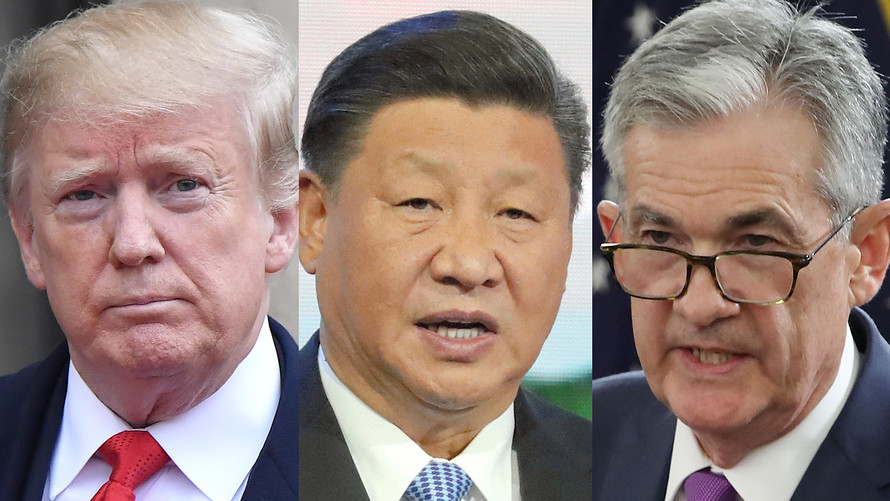
From the daily flow in the financial media, including “death crosses” and other hair-raising terms, you might think the sky is falling. But two “problems” for investors also contain seeds for tailwinds in the next stock market rally.
What is normal?
Federal Reserve Chairman Jerome Powell can easily solve one important concern for investors, according to Hank Smith, the co-chief investment officer for Haverford Trust, which manages about $8 billion for private clients in Radnor, Pa.
The Federal Open Market Committee has increased the short-term federal funds rate three times this year to its current target range of 2% to 2.25% and is expected to lift the rate by another 25 basis points in December. In a speech Oct. 3, Powell said “we are a long way from neutral at this point, probably,” which indicated interest rates may move considerably higher. This type of comment from a Federal Reserve chairman typically alarms stock investors.
In an interview on Nov. 15, Smith said the historical “neutral” federal funds rate, before the 2008 credit crisis, “was between 4% and 5%,” but that in the post-crisis environment, investors have come to believe that 3% is a more reasonable neutral rate. The S&P 500 Index SPX, +1.06% was down 7% from the end of September through Nov. 15 on concern about rising borrowing costs. But a Fed-related rally may be in store.
“If Chairman Powell, at his press conference, after the FOMC raises interest rates again in December, talks back those early October remarks, and indicates that four rate hikes are not a certainty in 2019, that will be very well greeted by the market.”
He also said there was “plenty of ammunition” for Powell to justify a gentler approach, including slowing global economic growth and no need to tamp down on inflation. He looked to the gold market as proof that inflation fears haven’t manifested. Gold GC1, -0.11% closed at $1,207.90 on Nov. 14, down from $1,281.50 a year earlier.
Playing nice
Smith also believes stock buyers will come out in droves if President Trump and Chinese President Xi Jinping get serious about striking a deal to keep harmful tariffs from going into effect.
“There is a high likelihood that in the not-too-distant future, let’s call it two or three months, you are going to get a resolution to the trade spat with China,” he said.
Going further, Smith looked back to early 2016, when falling oil prices and fear of a global recession, led by China, took their toll on stock prices. “We didn’t have a global recession and China didn’t have a hard landing,” he said.
Smith also said that a recent slowing for China’s economy was likely to be countered by government stimulus, “whether it is on the spending side or the monetary side.”
Favored stocks
Smith said “the cyclical side of the market is underperforming.” Cyclicals — shares of companies closely linked to economic growth — that he likes at current prices include FedEx FDX, +1.18% Honeywell HON, +0.72% United Technologies UTX, +1.23% and DowDuPont DWDP, +1.29% “We have added to DowDuPont, which is in bear-market territory,” he said.
He made clear that he stays away from “pure cyclicals,” including auto manufacturers and airlines.
Smith also favors traditionally defensive stocks, including PepsiCo PEP, +0.13% Coca-Cola KO, -0.04% and McDonald’s MCD, -0.16% as well as health-care companies, including Johnson & Johnson JNJ, +0.17% and UnitedHealth UNH, -0.01%
Smith doesn’t believe all the stocks above are bargains, but he does like them at current levels — even McDonald’s and PepsiCo, which both hit all-time highs recently. He said the cyclical names are still cheap: “The consumer staples and a lot of health care were kind of left for dead. There has been a fairly big rotation that started this summer into that area, particularly as the FAANG stocks (Facebook FB, -0.26% Apple AAPL, +2.47% Amazon.com AMZN, +1.28% Netflix NFLX, +1.16% and Google holding company Alphabet GOOG, +2.02% GOOGL, +1.56% ) lost their luster.”
“Our clients like owning individual stocks. When we get to difficult parts of the cycle — a bear market — it’s easier to hand-hold those clients and keep them invested when they own a portfolio of great companies. We do not invest in turnarounds or workouts,” he said.
“This has been the most hated bull market. It is now the longest bull market in modern history and one of the strongest. And yet there has been no love,” Smith said. He pointed to articles and analyst reports referring to “late stages” for the bull market and for the U.S. economy, even though “the likelihood of a recession occurring in the U.S. over the next 12 to 18 months is very, very low.”





























